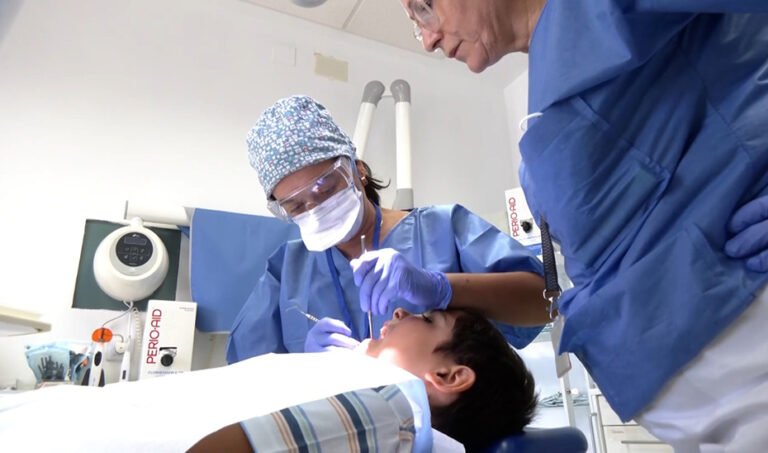
The Minister of Employment, Business, and Self-Employment, Rocío Blanco, has reported that her department allocated over 100 million euros last year to various measures and programs aimed at promoting the employment of Andalusian women, an investment that benefited more than 135,000 women throughout 2024.
This was conveyed by the Minister of Employment in a parliamentary committee, where she outlined the initiatives implemented to boost the activation of the labor market and improve the employability of groups facing greater difficulties in accessing the job market, including women.
Among other examples, she explained that incentives such as those aimed at promoting the recovery and creation of stable employment in Andalusia or those included in the Emplea-T program include measures in favor of women, with increased support when the hired person is from this group. In 2024, nearly 4.4 million euros were allocated to promote stable employment for 1,565 Andalusian women in the first case, while the Emplea-T lines that offer these advantages have already benefited 882 women with 11.64 million.
Another incentive mentioned by Rocío Blanco during her appearance relates to improving employability among people with disabilities in special employment centers and the regular job market. In this case, which also provides higher amounts when the hired person is a woman, around 7,500 women with disabilities benefited last year from an investment of nearly 39 million euros.
Additionally, the Andalusian Employment Service has been developing intermediation and orientation programs to promote the labor insertion of women, such as the Program for Supporting Women in rural and urban areas, which in 2024 allowed for the assistance of 1,822 women, of whom 908 were successfully integrated; the Professional Work Experience Program (EPES), which benefited 2,282 women through its 2023-2024 call with a budget of 24 million, as well as T-Accompany, which has assisted around 26,800 women.
Likewise, the Comprehensive Support and Accompaniment Service for the socio-labor insertion of women victims of gender violence assisted 518 women in 2024, who received over 4,600 hours of guidance, 34,013 hours of training, and 6,717 hours of actions aimed at insertion.
Another pillar on which the Ministry of Employment acts to promote women’s labor integration is Vocational Training for Employment. Among the programs implemented, she highlighted the one that includes a commitment to hire women victims of gender violence or trafficking and sexual exploitation, implemented through an agreement with the Spanish Red Cross, in addition to Prepared, aimed at developing skills for employability and digital entrepreneurship among women in rural areas, which will continue until June 30, 2026, with a budget of 30.68 million, benefiting over 55,300 women out of the 85,000 planned by the end of 2024.
Andalusia also has specific measures to promote self-employment among women. For example, in addition to the zero quota, women entrepreneurs who have ceased their activity due to childbirth and return to self-employment within two years of the effective cessation date can receive up to an additional 24 months of bonuses. In the past year, nearly 8,000 women took advantage of this, with an investment of 8.24 million.
Self-employed women can also apply for the line aimed at supporting the start of their activity, which increases the amount in their case and has benefited around 6,600 women with an investment of 30.5 million euros, among other measures promoted by the Ministry that ultimately «aim to create jobs, promote women’s participation and presence in the labor market, and overcome any labor discrimination derived from work-family reconciliation.»
Labor Market
In the same line, Rocío Blanco reviewed the situation of Andalusian women in the labor market, based on the data collected in the study conducted by the Argos Observatory for International Women’s Day on March 8, ‘Women in the Andalusian Labor Market. 2024,’ showing that the gender gap in Andalusia continued to narrow last year.
Among other data, the document indicates that the gender pay gap in Andalusia has decreased by 1.9 points compared to the previous year and by 5.54 points compared to 2008, although men still earn 7.32% more in gross salary per hour worked than women.
In 2024, the female population affiliated with Social Security in Andalusia amounted to 1,601,038 women, representing 47.11% of the employed population, with women occupying 56.74% of the new jobs created. By regimes, women are the majority in Andalusia in the Special System for Household Employees of the General Regime (95.59%) and among workers affiliated with the General Agrarian Regime (50.45%).
Analyzing women’s participation in the labor market, the report notes that the Andalusian active female population amounts to 1,907,500 women and the female activity rate is 51%. However, despite the 26.14% growth in the female active population over the last 18 years, their participation in the labor market remains lower than that of men.
Nonetheless, it increases as their qualifications do, so that in strata with higher education, the weight of women in the market equals that of men. Thus, the female activity rate exceeds 77% for those with university or doctorate studies and stands at 6.82% for those without studies.
The Argos monograph also analyzes the reasons why women do not participate in the labor market, with the dedication to household tasks being the main cause (cited by 37.57% of inactive Andalusian women). In the case of men, the main reason (66.47% of cases) is receiving a retirement pension.





